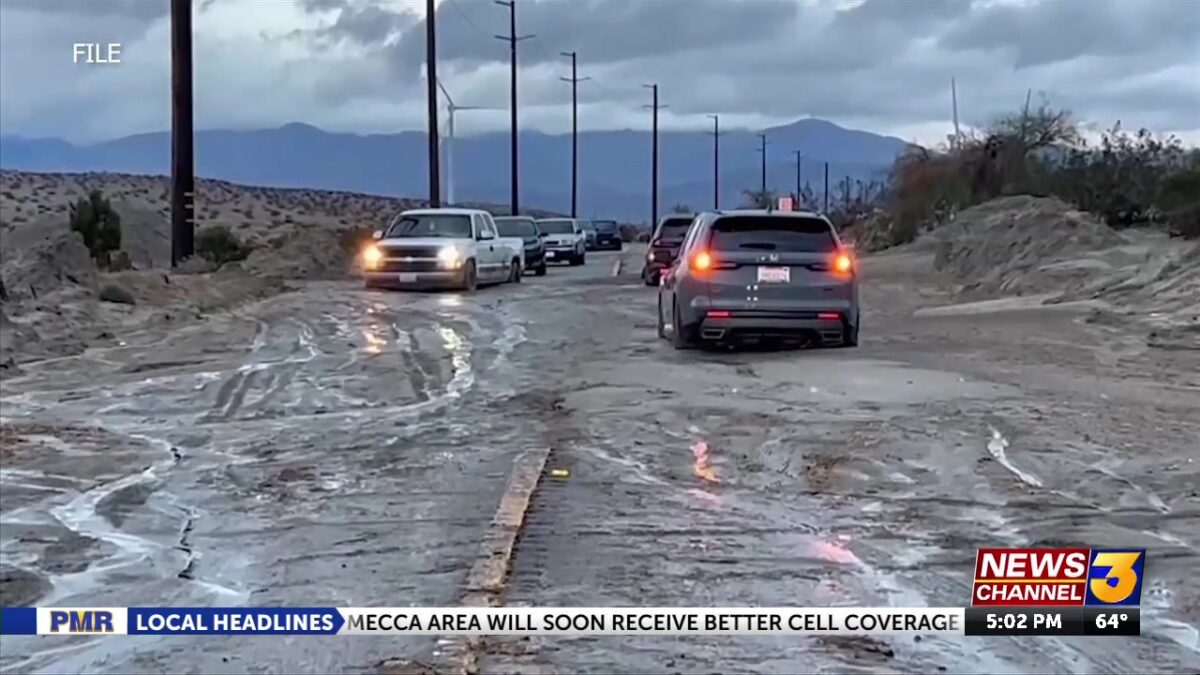Valley erosion risk in question after weekend closure of key road due to mudslide

Gavin Nguyen
CATHEDRAL CITY, Calif. (KESQ) – With more rain on the way this week, officials are keeping a close eye on areas with mudslide risk, especially with the ground already wet from last weekend’s storm.
A mudslide along Varner Road at the northern end of Cathedral City stranded dozens of cars over the weekend. Cathedral City Public Works cleared the roadway on Sunday.
A College of the Desert associate professor in geology, Edith Rojas, said the risk comes with the environment we live in. As a floodplain, the Coachella Valley often sees flooding during torrential rainfall. Mix that with the loose, fine sediment and sand that valley residents see in the air each time there’s a wind storm, and you get increased risk of mudslides in spots like Varner Road.
Rojas said there are several cost-effective options for infrastructure projects that could be made to redirect the debris flow away from homes and roadways, potentially saving lives.
We asked Cathedral City – will improvements like those happen in the future?
According to John Corella, the Director of Public Works, the city and Riverside County Flood Control have worked in tandem over the past five years. He said they allocated funding for several crossings underneath the roadway for water and mud to drain in three spots along Varner.
Beyond that, Corella hinted at future improvement projects – namely, one that would expand Varner to a four- or six-lane road.
“We’re looking at is state and federal funding to assist us in funding this. Essentially, we’ve already done preliminary estimates, depending how long we take this corridor,” Corella said. “It’s a $20 to $30 million minimum project to improve this section of roadway. This roadway should have a minimum of three lanes in each direction or a six lane roadway.”
“What’s taking so long with all these improvements?” News Channel 3 reporter Gavin Nguyen asked Corella.
“Government moves slow the and it’s an expensive project,” he replied. “Roadways are not cheap. So the beauty of government work in slow is that we have time to analyze and once we do, the project is going to be done right.”